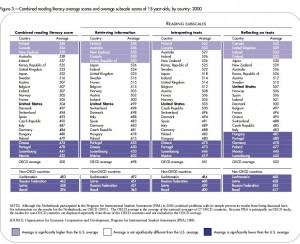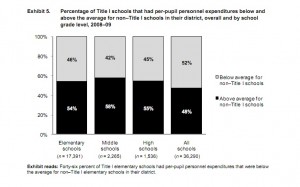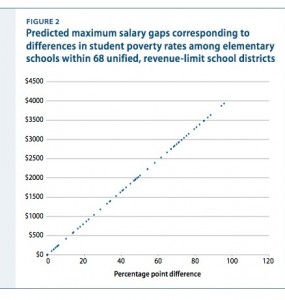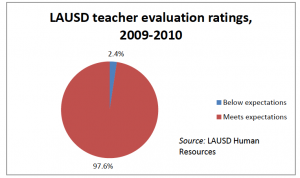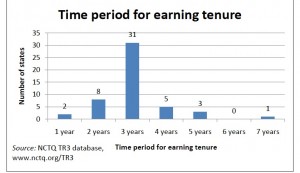Kathy Baron provided reporting from Sacramento for this post.
The Senate Education Committee voted unanimously Wednesday to make it quicker and cheaper to suspend and fire teachers facing a narrow range of “egregious” misconduct charges that include sex, drugs, and violence. In doing so, they disregarded calls from the mayor of Los Angeles and superintendents of Fresno and Los Angeles Unified to go further, by also making it easier to dismiss incompetent teachers.
“It matters that this state put a stake in the ground” on the issue, said Los Angeles Unified Superintendent John Deasy, in supporting SB 1059, sponsored by Senate minority leader Bob Huff of Diamond Bar, giving school boards the final say over all dismissals. Deasy and Fresno Unified Superintendent Michael Hanson called for eliminating the Commission on Professional Competence – a three-member appeals board that contains two teachers – which they said adds an expensive and unnecessary bureaucratic hurdle to firing teachers who behave badly and perform poorly. The Commission would be replaced with an administrative law judge, giving only advisory opinions to the local school board.
But Sen. Alan Lowenthal (D-Long Beach), who chairs the Education Committee, said it was “premature” to change the piece of the dismissal law dealing with unsatisfactory performance, because the Legislature has yet to create a teacher evaluation bill that defines satisfactory performance, with support systems to help teachers meet that standard.
Instead, Lowenthal and other members backed a more restrictive bill, SB 1530, by Democratic Sen. Alex Padilla of Los Angeles. It too would replace the appeals board with an administrative judge, but only in those cases involving sexual misconduct, drugs, and violence by teachers against children. (Huff, in a comparison of the two bills, claims that Padilla’s would prevent dealing expeditiously with some recent incidents of abuse: using racial epithets, locking children in a closet and taping a child’s mouth shut for talking too much).
Padilla’s and Huff’s bills were partly a response to community outrage following criminal charges of sexual abuse against students by three former teachers at Miramonte Elementary in Los Angeles Unified. In two of the cases, the district failed to document and follow up on earlier investigations of suspected illegal acts.
Padilla’s bill would make it easier to suspend a teacher facing “serious and egregious” charges without pay; it would remove the ban in current law against filing dismissal charges during the summer, and it would remove the current prohibition on using evidence of similar violations that’s more than four years old against a teacher. In the Miramonte case of the worst alleged molester, the district paid Mark Berndt $40,000, including legal fees, to get him to drop the appeal of his firing. Berndt is facing 23 counts of lewd acts against children ages 7 to 10.
Saying that the average teacher dismissal case (not just for alleged misconduct) costs Los Angeles Unified $300,000, Deasy called Padilla’s bill “about-time legislation” to enable the district to deal quickly with teachers “who violate sacred trust.”
Los Angeles Unified board member Nury Martinez said the bill would fix an “antiquated” part of the education code that “ties our hands when we need to reassure parents with decisive action.”
“This is about extreme cases where a trusted employee has engaged in unspeakable behavior involving a child and we have to act,” she said.
The California Teachers Association and other unions, however, denied that any changes in law were needed, called both the Huff and Padilla bills assaults on teachers’ rights and little more than grandstanding.
“There are already very clear, very strict guidelines in the education code that give districts immediate authority to protect students and ensure that teachers who engage in that kind of serious sexual misconduct or immoral conduct are immediately removed from the classroom,” said CTA lobbyist Patricia Rucker.
But the Stull Act, which Gov. Ronald Reagan signed in 1971, also protects teachers with due process rights that should not be taken lightly, she said. What’s more, Rucker said the Padilla bill could backfire. Before the Stull Act created an objective commission, peer reviews would sustain slightly more than one third of dismissal decisions by school boards, she said. Since then, with the weight of the commission behind dismissals, Superior Courts uphold seven out of nine firings, she said.
Hanson and Deasy, however, indicated that those statistics are misleading, because most cases involving misconduct charges fall by the wayside – and not for lack of merit. Deasy said that since 2003, 667 cases involving charges of serious misconduct were brought forward in California; of those only 129 went to a hearing, with 82 resulting in dismissal. “This does not pass a reasonable smell test.”
Assault on due process
Ken Tray, political director of United Educators of San Francisco and a spokesman for the California Federation of Teachers, called SB 1530 “an attack on educators of California.”
“Sometimes politicians have to stand up for what is truthful, what is right, and what is good. Teachers are under attack,” Tray said. “And one of the ways to defend the people, the over overwhelming number of my colleagues who are the most highly moral and conscientious of California’s public servants is to defend their due process, so that justice is served.”
Padilla disputed that the bill would deny teachers due process. They could still request a hearing by an independent arbiter and present their own defense with an attorney and witnesses and the right of disclosure. It would not make teachers “at-will employees,” as the unions claimed. Teachers would retain their right to appeal decisions in Superior Court.
The bill is needed, he said, because appeals can be lengthy and onerous.
Hours after the Senate Education Committee acted, members of the Assembly Education Committee were even less included to change the current law. They stripped a parallel version of the Huff bill, AB 2028, sponsored Republican Steve Knight of the Antelope Valley, of all but two provisions. As amended, it would remove the four-year limitation for using evidence of prior allegations, and it allow the dismissal process to begin during summer.
That didn’t discourage Knight from proclaiming victory in a press release. “Parents and students across the state are cheering today’s bipartisan vote to enact these important reforms to protect our kids from classroom predators,” he said. “This is just the first of many steps that must be taken to enact these much-needed reforms and prevent a Miramonte-like tragedy from ever happening again.”

